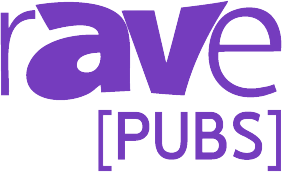Here’s How BETA Technologies Elevated Its Aviation Training Using Scalable Technologies

Based in South Burlington, Vermont, BETA Technologies is an aerospace manufacturer developing next-generation aircraft, including electric vertical takeoff and landing (eVTOL) and electric conventional takeoff and landing (eCTOL) aircraft. Founded in 2017 by pilot and engineer Kyle Clark, the company quickly gained recognition for its pioneering work in electric aviation. BETA’s ALIA aircraft, unveiled in 2020, are advanced electric vehicles designed for cargo, medical transport and military applications. The company has completed crewed transition flights with its ALIA VTOL (A250) and several long-range journeys with the ALIA CTOL (CX300), including a recent coast-to-coast trip and an ongoing European tour.
BETA Technologies is committed to advancing safe, efficient pilot training for customers and operators planning to use its ALIA fleet. As part of this effort, the company has developed cutting-edge training simulators to ensure pilots receive the highest level of preparation. A critical component of high-resolution immersive simulators is seamless and reliable visuals. Most simulators with extended or dual-curvature fields of view use multiple projectors to cover the display area, increasing resolution and immersion by filling the user’s full field of view with eye-limited pixel density. However, aligning these images is time-consuming and requires specialized knowledge, limiting simulator uptime. To address this, BETA selected Scalable Display Technologies as its official partner for automatic display alignment in its direct-projection-based simulators.
“After evaluating multiple solutions over the past year, Scalable has been our primary warping tool,” said Vincent Moeykens, Simulation Lead at BETA Technologies. “We chose Scalable because it provides a highly consistent calibration process, which ensures our simulators maintain accuracy and reliability. The software is the most efficient solution we tested, significantly reducing setup time. Additionally, it integrates seamlessly with our visual tools, including our primary image generator, X-Plane, which has streamlined our workflow immensely. Beyond the technology itself, Scalable’s support has been invaluable in our simulator development.”

A core principle at BETA Technologies is developing simple, pragmatic, and intuitive systems. Scalable’s automated calibration has helped reduce operational complexity and staffing requirements across BETA’s simulator program.
Simulators are essential to BETA’s aircraft development process. By creating immersive, visually accurate environments, they allow test pilots to assess design changes, cockpit ergonomics, and avionics functionality long before any physical flight. This early-stage evaluation helps ensure every modification improves operational efficiency and pilot experience. For pilots training on BETA’s all-electric aircraft, high-fidelity simulation enables muscle memory development, real-time decision-making practice, and exposure to realistic flight conditions — all in a controlled, repeatable environment.
Moeykens added: “Our commitment to safe and effective pilot training is central to our mission. High-quality training devices are essential for achieving this goal. Our simulators have been integral to the aircraft development process, allowing us to refine cockpit layouts, avionics and control feel before finalizing aircraft designs. Since our aircraft are still undergoing certification and are not yet in the customer’s hands, these simulators serve as vital engineering tools, providing our test pilots with realistic environments to evaluate design decisions early in the development cycle.”

Realism in simulation is crucial for bridging the gap between training and real-world flight. This is especially important for novel aircraft types, where simulation plays a central role in testing and refining systems before deployment. BETA has fully embraced this model, leveraging simulation to improve safety and reliability throughout aircraft development. A key enabler of this effort is its partnership with Scalable Display Technologies, whose calibration software ensures precise, immersive visuals that reinforce pilot readiness and operational confidence.
“Ultimately, our partnership with Scalable is about delivering reliability, efficiency and high-quality training experiences,” said Moeykens. “Their expertise in image calibration supports our mission to create a safe and advanced training ecosystem for the next generation of electric aviation.”
Scalable leads the market in display alignment solutions for use cases ranging from higher education and virtual production to military simulation, design, museums, and more. Powered by advanced machine vision algorithms, Scalable’s software calibrates color, intensity and geometry across multiple projectors, producing one seamless digital image. There are no limits to the size or resolution of displays — making it a powerful, cost-effective tool for any immersive visual system.




